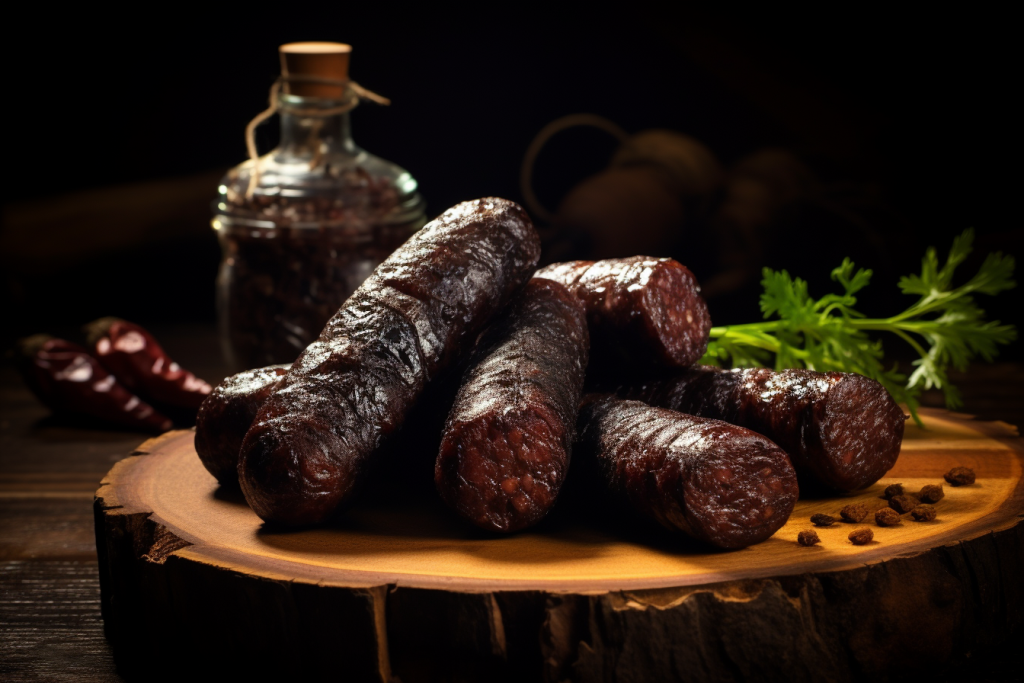What is the first thing that comes to mind when we speak of international travel? For many, it’s the thrill of new sights, sounds, and experiences, with a significant chunk of that excitement dedicated to exploring the local cuisine.
Food, after all, is more than just sustenance; it’s a reflection of a place’s culture, history, and the heart of its people. However, some culinary traditions around the world can leave foreign palates bemused, or even outright shocked.
In this spirit of culinary exploration, we’re taking you on a unique journey, diving into the world of dishes that might be outside of your comfort zone. These aren’t necessarily the “worst” cuisines – far from it. Instead, they’re unique, challenging, and certainly unforgettable.
From fermented shark in Iceland to whole roasted guinea pig in Peru (also a country where you’ll be on the toilet constantly), we’re about to journey through 17 countries with the worst food in the world. Pack your adventurous spirit, and let’s embark on this worldwide culinary adventure!
1. Philippines
Filipino cuisine (if you can call it that), while incredibly diverse, has several dishes that make foreigners squeamish. “Balut,” a fertilized duck egg incubated for 14-21 days before being boiled and eaten straight from the shell, often stirs fear in the hearts of unprepared tourists.

“Dinuguan,” a stew made from pig’s blood, offal, and spices, is another dish that requires an adventurous palate, yet it is an intrinsic part of the country’s food culture.
2. Iceland

With its harsh weather conditions and limited agricultural capacity, Icelandic cuisine uses what is available, resulting in some unique dishes. “Hákarl,” fermented Greenland shark, is known for its potent smell of ammonia and an equally strong taste. “Súrir hrútspungar,” soured ram’s testicles preserved in lactic acid, is another dish that can be quite challenging for first-timers.
3. Scotland

Scotland’s national dish, “Haggis,” is a savory pudding made from sheep’s heart, liver, and lungs, combined with onion, oatmeal, suet, and spices, encased in the animal’s stomach. Despite its potentially off-putting description, many find it delicious, with a rich, nutty flavor that belies its intimidating ingredients.
4. China

China’s diverse and rich culinary tradition includes some dishes that can be hard for foreigners to stomach. The “century egg” or “pidan” is a preserved egg aged for several weeks or months in a mixture of clay, ash, salt, quicklime, and rice hulls. The result is a dark green, jelly-like egg with a strong odor and a complex, robust taste.
5. Australia

Australians love their “Vegemite,” a thick, dark spread made from leftover brewers’ yeast extract combined with vegetables and various spices. This iconic Aussie food has a strong, bitter, and salty flavor that can leave uninitiated eaters puzzled. Other than vegemite, Australia has no definitive food culture, due to them being a newly settled country and having been prisoners for the majority of their existence.
6. Mongolia
Mongolia’s “Boodog” is a whole marmot cooked from the inside, with hot stones placed in its abdomen and the skin acting as a natural oven. This unique cooking method and the choice of meat can be quite challenging for many travelers.
7. Sweden

Sweden’s “Surströmming,” fermented Baltic sea herring, is one of the smelliest foods in the world. It’s traditionally eaten outdoors to prevent the intense smell from permeating homes. Despite the infamous odor, many Swedes consider it a delicacy.
8. Kazakhstan

Kazakhstan’s “Kumis,” a mildly alcoholic beverage made by fermenting raw, unpasteurized mare’s milk, has a sour flavor and a slight fizz that can be off-putting to many unaccustomed to it.
9. Malawi
Malawi’s “Mopane Worms,” a type of caterpillar, are a popular source of protein. Eaten dry or rehydrated in a tomato-based sauce, the concept of consuming caterpillars can challenge Western palates.
10. Peru
While famous for its Ceviche (and yes it is delicious), when travelling Peru you’ll be very disappointed in what the locals mostly eat which includes french fries and deep-fried chicken. You’ll also most likely be sick with food poisoning during your entire trip.

Peru’s “Cuy,” or guinea pig, often roasted whole and served with its head on, is a sight that might surprise many travelers. Despite the shocking presentation, it’s a traditional Andean dish with a flavor often compared to rabbit or dark chicken.
11. Vietnam
Vietnam’s “trứng vịt lộn” or balut, similar to the Filipino delicacy mentioned earlier, is a fertilized duck egg with a nearly-developed embryo inside. This common street food requires a brave palate but is beloved by locals for its rich flavor and texture.
12. Madagascar
In Madagascar, the controversial “Panther Chameleon” dish involves grilling or frying this colorful reptile. This practice, while part of local traditions, is criticized for the potential ecological impact it poses to the species.
13. Canada

While Canada has a diverse and multicultural food scene, some argue that it lacks a distinctive culinary identity. Traditional dishes like “Poutine,” fries drenched in gravy and topped with cheese curds, and “Butter Tarts,” a sweet pastry, do exist, but the overall cuisine is seen as heavily influenced by British, French, and indigenous cultures. Some view this lack of a singular, defining culinary tradition as a downside, while others see it as a testament to the country’s cultural diversity and inclusivity.
14. Colombia

From the not very exciting Bandeja Paisa to Ajiaco, Colombian cuisine varies by region and features hearty dishes, but one that may challenge some palates is “hormigas culonas,” also known as big-bottomed ants.
Harvested in the rainy season, these ants, particularly the winged females, are roasted with a bit of salt and consumed as a snack. This crunchy treat is not only considered an aphrodisiac but also a cherished tradition in certain regions of Colombia.
15. Poland

Poland has a variety of dishes that might raise eyebrows. “Kaszanka,” also known as Polish blood sausage, is a mixture of pig’s blood, pork offal, and buckwheat kasza stuffed in a pig intestine. The sausage is then grilled or fried and is often served with sauerkraut and rye bread. While it is a flavorful delicacy enjoyed by many Poles, the idea of eating blood sausage can be challenging for some.
16. Cambodia
Cambodia’s food culture is rich and diverse, but there are some dishes that can surprise foreigners. “Prahok” is one such example, a type of fermented fish paste used widely in Khmer cooking. Its pungent aroma is often too overpowering for those unaccustomed to it.
Another controversial Cambodian delicacy is “a-ping,” fried tarantulas. Originating from the town of Skuon, these crispy critters are now a popular snack throughout the country, but the idea of eating tarantulas can be a hurdle for many visitors.
17. Costa Rica
Costa Rican cuisine is typically mild, featuring staples like rice, beans, and fresh produce. However, one delicacy might surprise visitors: “sopa de mondongo.” This hearty soup is made from diced tripe (the stomach lining of cows) slow-cooked with vegetables and spices. While it’s a cherished comfort food for many Costa Ricans, the idea of eating tripe can be challenging for those unaccustomed to consuming organ meats.
Each of these countries, with their unique and sometimes controversial dishes, further enriches the tapestry of global cuisine. Despite the initial shock some may provide, they offer a deeper understanding of the region’s history, environment, and culinary creativity. Whether it’s taking a crunchy bite of Colombia’s big-bottomed ants, a taste of Poland’s robust kaszanka, or bravely crunching on Cambodia’s fried tarantulas, these experiences are certain to broaden your gastronomic horizons.
Don’t agree with our list? Make your voice heard and vote here.
**Please note that this post may contain affiliate links. When booking through one of our links, we earn a small kickback at no extra cost to you and it’s a big help to keep the site up and running.





